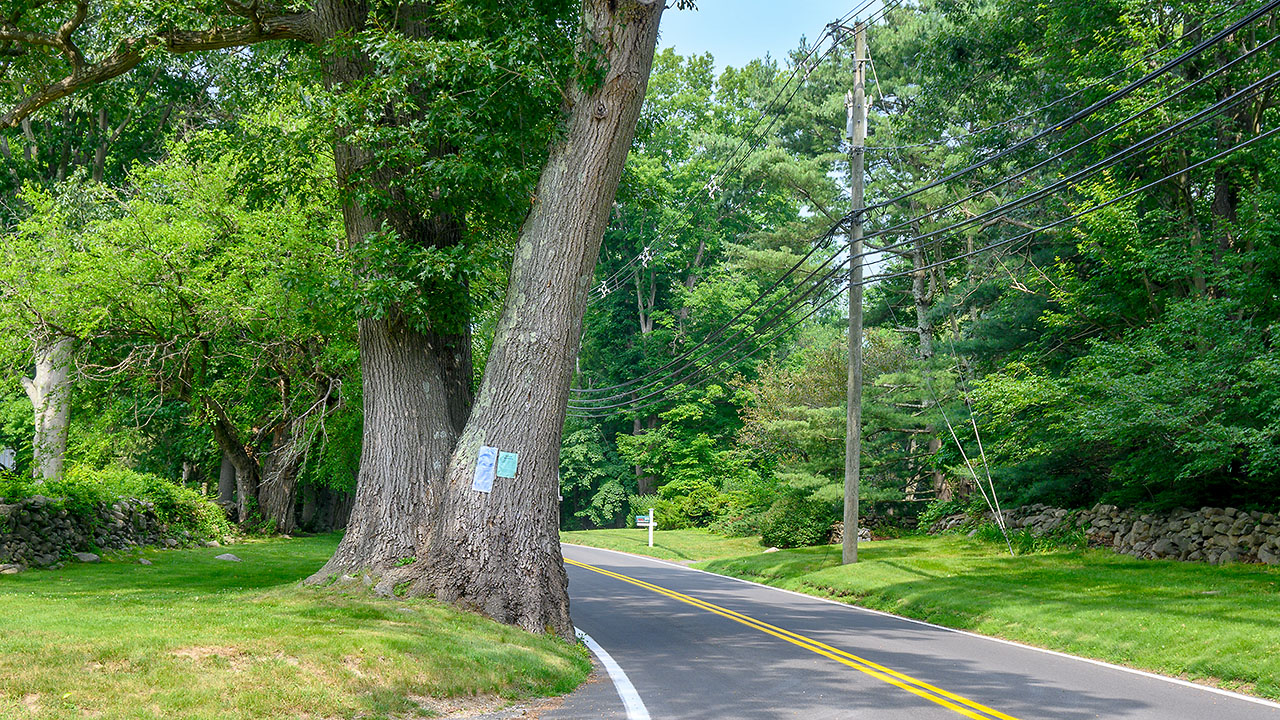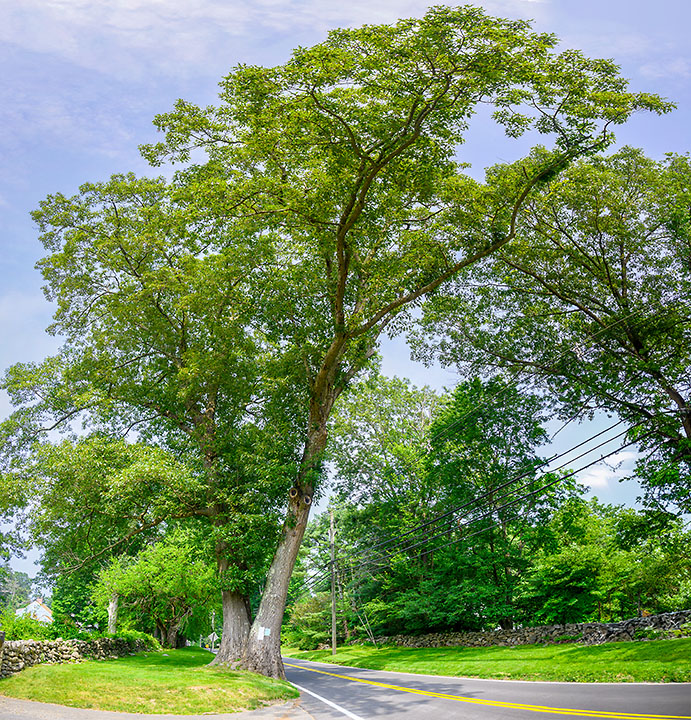Norfield Oak Set to Come Down

Weston Today photos
The old, “once majestic” tree known as the Norfield Oak faces its final curtain by the end of August, after the finding of an expert arborist and the Tree Warden that its rapid deterioration poses a significant risk to public safety.
Tree Warden Tom Failla posted a removal notice on the Norfield Oak on June 12, conducted a public hearing on June 29, and issued his final decision the next day.
“Sadly,” wrote Dr. Failla, “because of the tree’s deteriorating condition and declining ability to support its structure even with previous intervention measures and because of an unacceptable risk of tree part and/or cable failure of this once magnificent red oak, this tree is to be removed in a safe manner under the direction of the tree warden before the end of August 2023.”
The tree, standing nearly 100 feet tall and said to be at least 150 years old, has been at risk for years. It was slated for removal when the six-lot Norfield Farm Lane subdivision was built in the late 1990s, and then again in 2016 when its protrusion onto Norfield Road was deemed a traffic hazard.
Both times, public sentiment weighed in favor of saving the tree, which at the time was believed to be fairly healthy and posing low risk. But the arborist assessment performed in May shows a reversal: “a critical loss of structurally sound material” and a risk to people, vehicles, and power lines.
At the hearing, Dr. Failla said the tree has rapidly decayed since 2016 and that failure is probable, with significant consequences. “The risk to public safety is unacceptable,” he said.
Dr. Failla said there is no way to remove the risk short of removing the tree.
Measures taken in 2016 to forestall removal included installing support cables and cutting away one of the tree’s four large trunk stems to eliminate the protrusion onto Norfield Road.
The cables are now found to be under extreme load and undersized. Where the trunk stem was removed, the arborist found large cavities with significant decay, deep lateral cracks, fungal and organic material covering hidden cavities, and damage from wood boring insects and woodpeckers.
Dr. Failla said he has received many suggestions about how to memorialize the Norfield Oak, including ideas about what to do with the wood.
He said he has already collected acorns from the ground, sees others still on the tree, and has identified nearby seedlings. The hope is that descendants of the Norfield Oak can be propagated.

